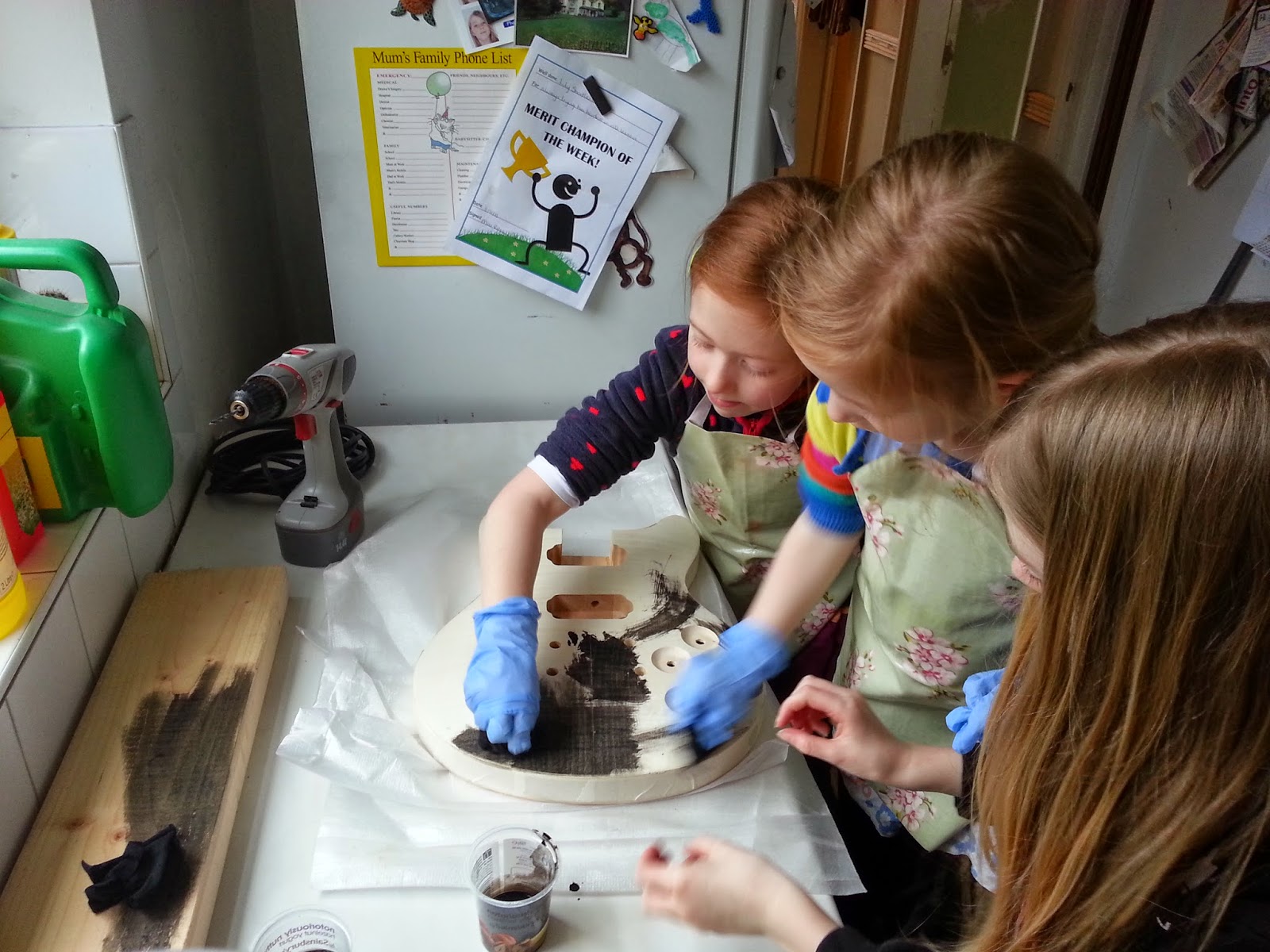Just before I start applying the finish I need to stain the headstock and get the lettering on it.
Didn't see the point in trying to get a burst effect on the headstock so I went with the same ink mix that I used on the outer edge of the body.
I used shellac on my last kit with stunning effect so I thought I would use it again on this one. I know it's not as hard wearing, and it's a labour of love to apply however it feels just delightfully silky soft and warm to touch.
The shellac darkened the basswood body giving it a warm antique look
And the same for the maple neck, but the front is a different story...
In my inexperience I didn't count on the natural slightly yellowy colour of shellac and what it would do to my lovely blue front and headstock!
Oh look, the lovely flame top blue burst has turned a greeny blue... Oops... Thankfully and with no shortage of luck it's turned a gorgeous dark sea green and blue. This certainly wasn't planned but I absolutely love the results, in fact I'm almost sorry that it's going to someone else now!
Thankfully the headstock turned out the same colour, and although the black initials in the hearts can only just be seen, the gold lettering stands out rather quite nicely
























